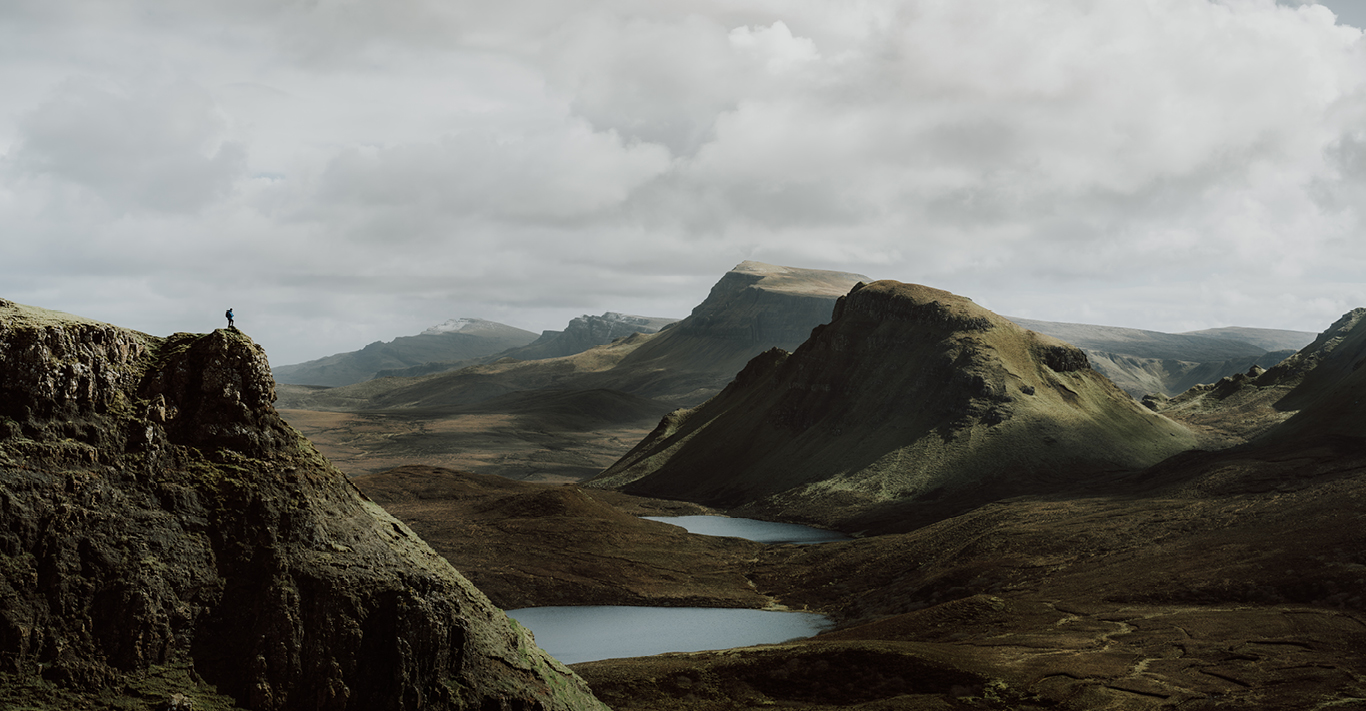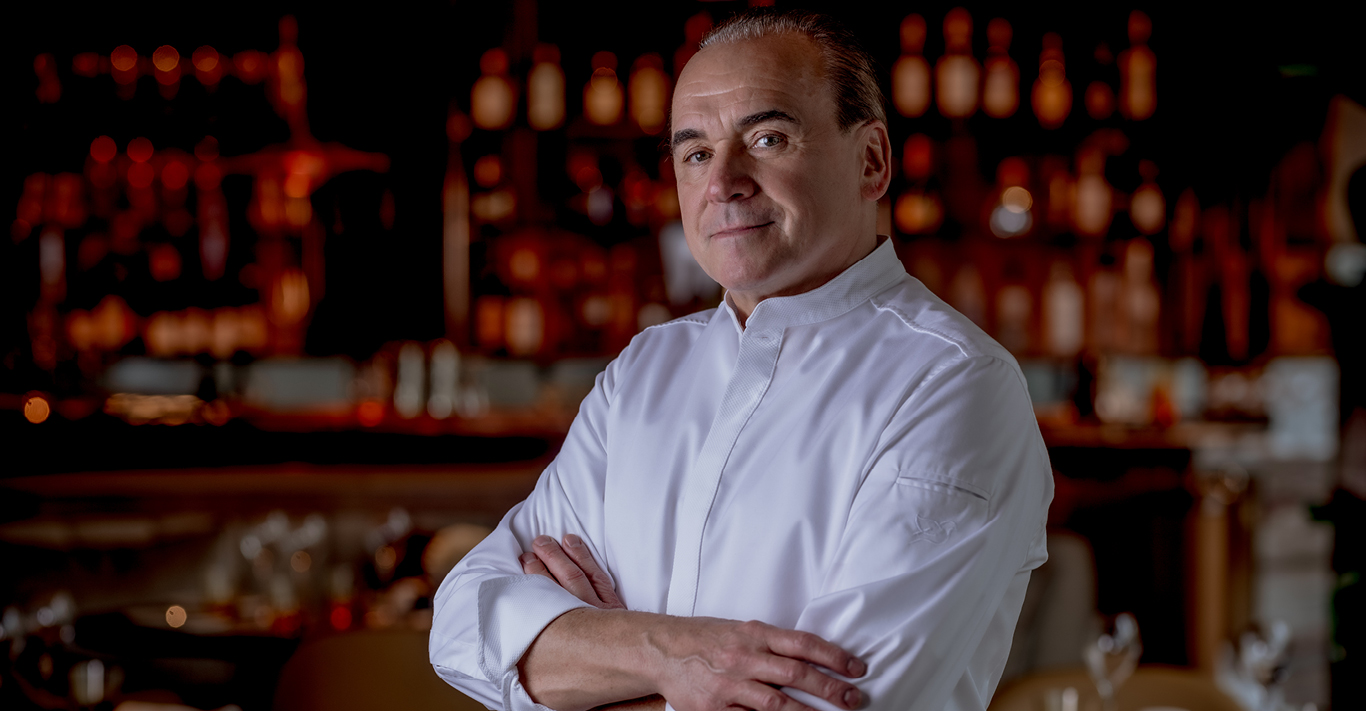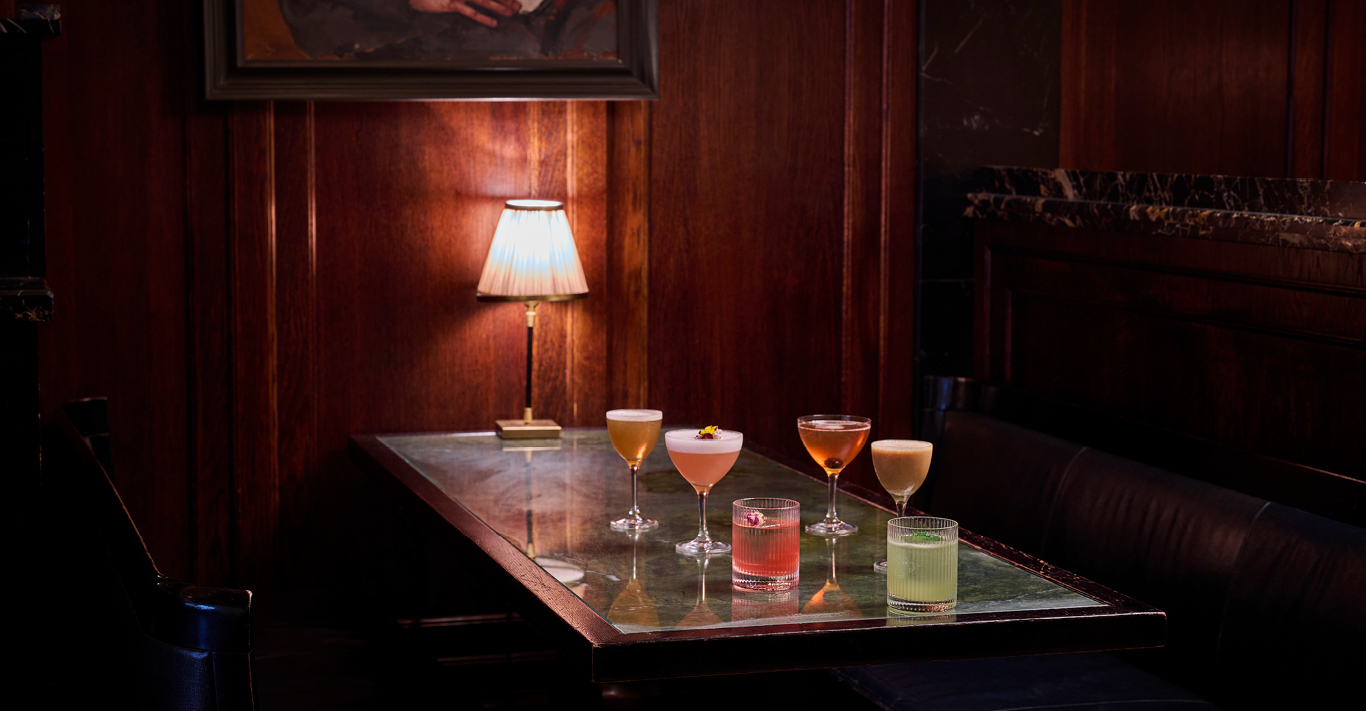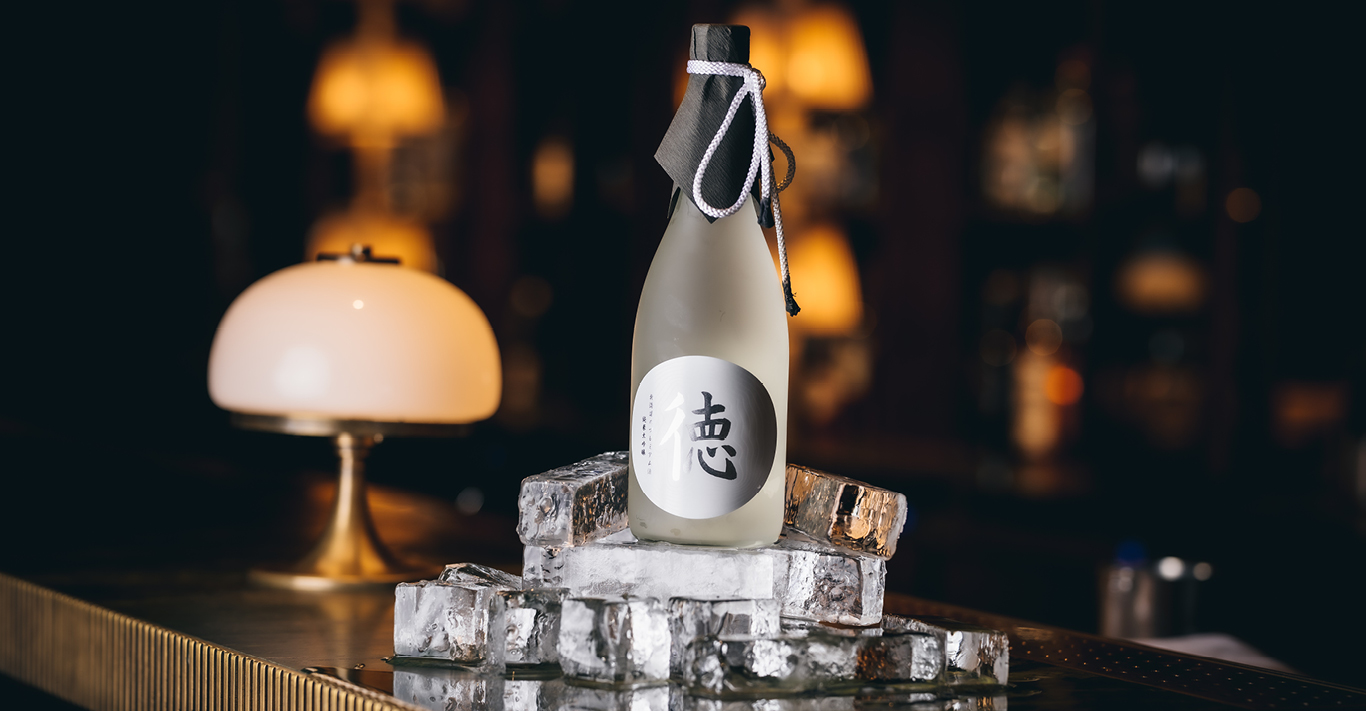WORDS
Chris Madigan
Wildmoor is a new range of high-aged, blended whiskies, starting at an impressive 21 years old and going up to 40. It is the creation of William Grant & Sons, the family company that owns Glenfiddich and The Balvenie. However, if you were to assume those whiskies are in the blend, you’d be wrong. ‘The demand for those spirits for our single-malt bottlings is so high, we can’t spare it for blends,’ says master blender Brian Kinsman. ‘Everyone assumes they go into our blended malt, Monkey Shoulder, but that’s not the case, and they’re not in Wildmoor either.’ So where is the liquid from?
Back when the family’s most famous Speyside distilleries opened, in 1887 and 1892 respectively, their whiskies were not bottled as single malts. That came much, much later (Glenfiddich in 1961). It was in blended Scotch that Grant’s made its name.

Blending meant that while they distilled some of their own liquid, they also needed to trade with other producers to build up a stock of different flavour profiles to blend with. And the practice continues today. The peculiarity of Grant’s is that continual family ownership means it has accumulated quite a stock of other people’s whiskies.
So, when Kinsman was tasked with creating a range of seven blended whiskies (three available in the UK; two in global travel retail; two more exclusive to parts of the far east) he was as daunted as many master blenders would be. ‘The way the whole whisky industry has built up is effectively through swapping. “You give me some of your single malt, I’ll give you some blended malt and some grain whisky.” We deal with every company in the industry, exchanging whiskies with them all.’
Kinsman won’t reveal which distilleries are represented because there is a mutual omertà in the industry (which must mean Glenfiddich goes into someone else’s blend – but nobody is letting on!). What he will reveal is the scale of the trade.
‘We bring in something like 40 or so single malts into our portfolio. And we’ve then been doing that for decade after decade. The family ownership thinks long-term and has a very straightforward policy: don’t use something for the sake of finishing that parcel; just keep it because one day it’ll be good for something else. So 20, 30, 40 years hence, you’ve got this amazing back-catalogue of pretty much everything from across Scotland.’
The next question when faced with a brief that involves seven expressions, is how to differentiate them. The concept is to create a flavour map of Scotland that is not the traditional division by regional character, but expressed in different dramatic landscapes of the country. While that sounds like a marketing department creation, it has given Kinsman a theme to work to. The next step was to establish a character that links all the whiskies in the range so that it is more Magnificent Seven than Six (plus one) Characters in Search of an Author.
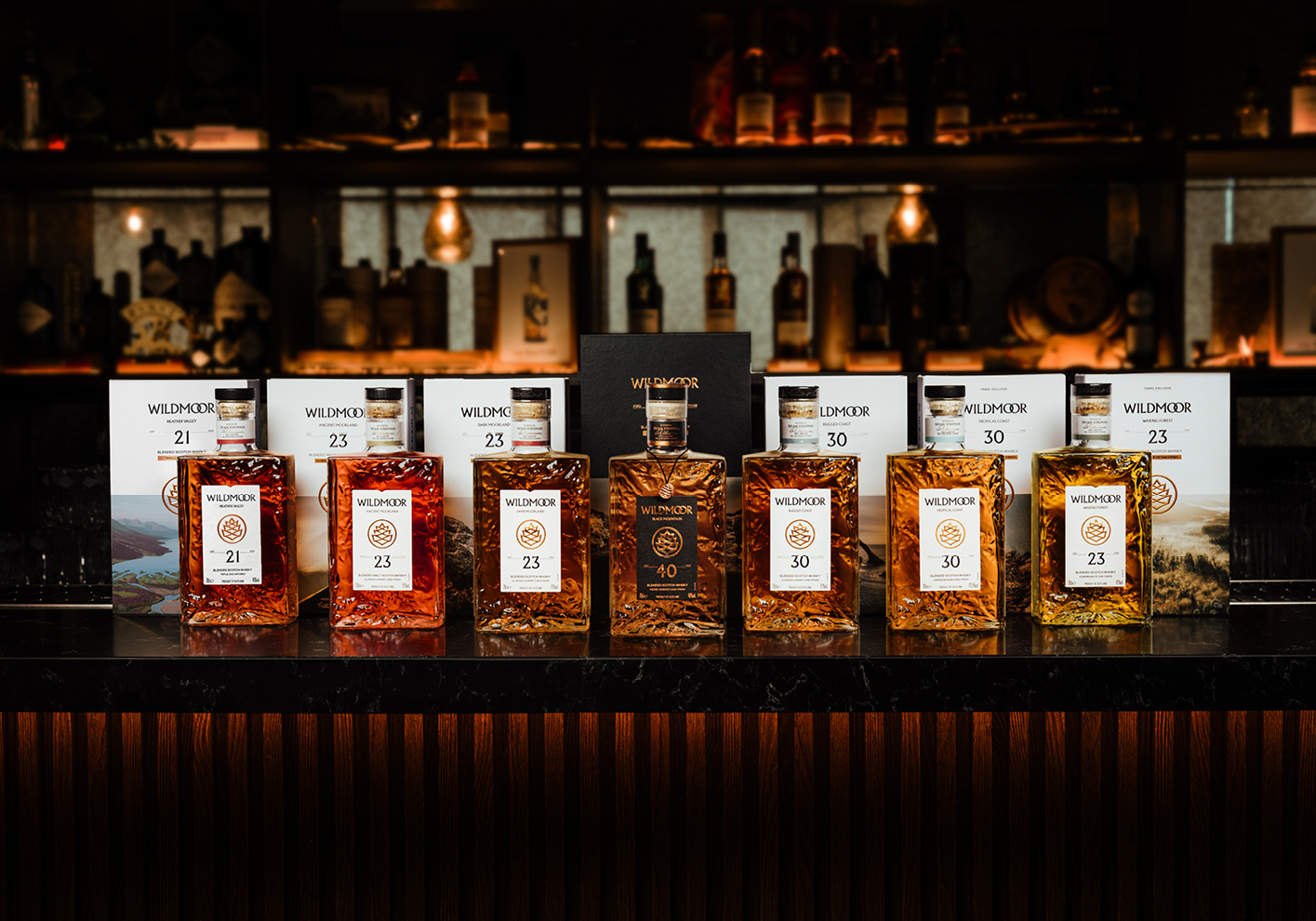
‘Maybe not everybody works this way but, from my own perspective, it’s always good to have a grounding point in a range of whisky,’ Kinsman explains. ‘We want to try and get that balance of flavour, so that the other variants can then spin more off it.’
The grounding point for Wildmoor is at quite an altitude: Dark Moorland (£185) is blended from whiskies with a minimum of 23 years behind them, including a finish in oloroso sherry casks. It has a very sweet nose, with vanilla tablet and fruitcake to the fore. The spices come through on the palate, along with raisins and a whisp of barbecue smoke and griddled fruit. From start to finish, it is bold but smooth.
The 30-year-old Rugged Coast (£550) is also finished in oloroso casks but here the smoke is far more noticeable, particularly on the palate. The blend includes some Islay whisky and peated whisky from other areas, where the organic matter is made up of trees and heather instead of seaweed. Kinsman says, ‘When you’re blending, you have to be careful with the really medicinal Islay peat because it has a profound effect on a whisky, whereas the wooded peat is more amenable to holding the blend together.’
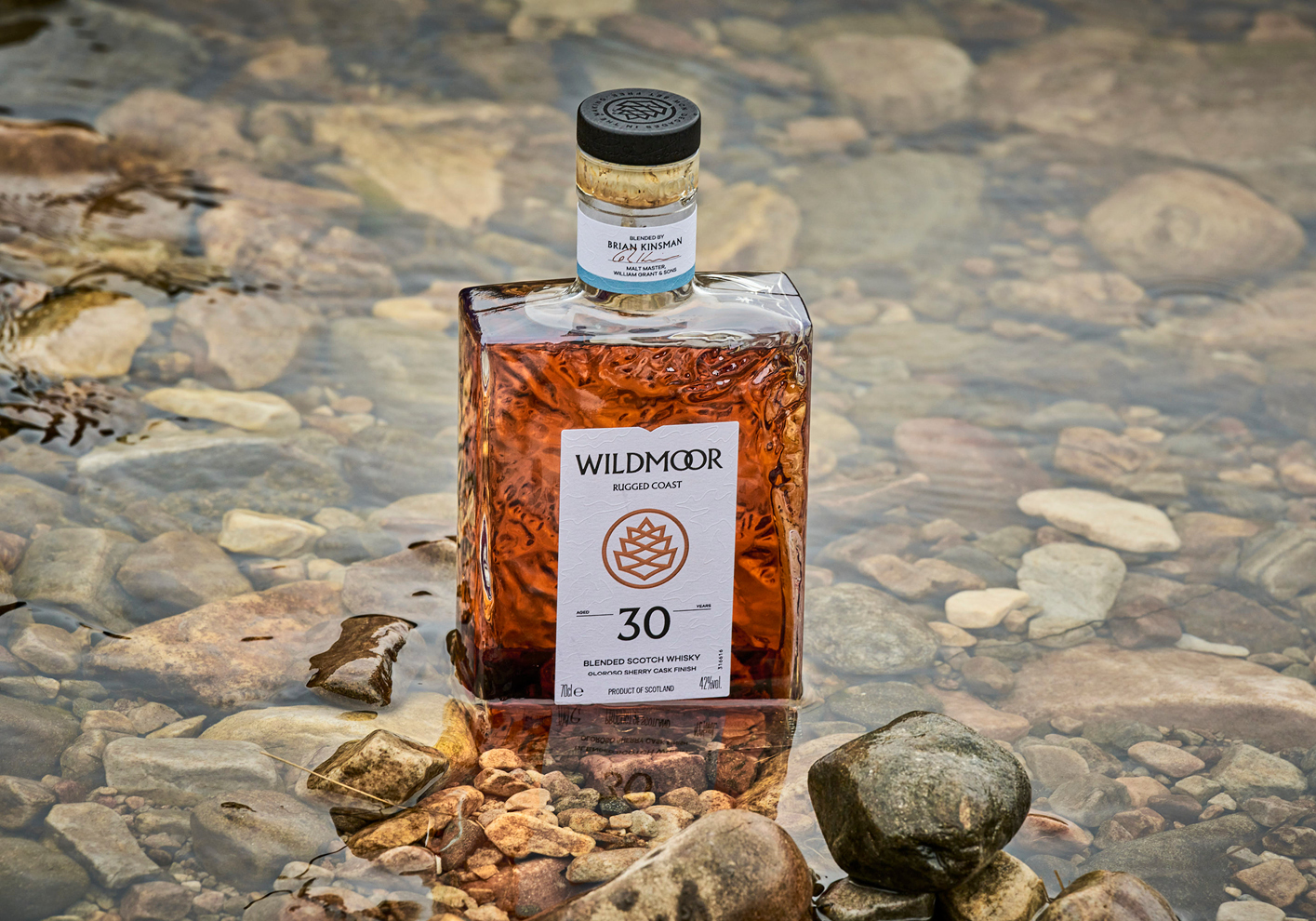
There are surprising, sweet notes in this blend – liquorice and stone fruits on the nose, Parma Violets and cream soda on the palate – and a creamy mouthfeel that lasts long into the finish.
The final whisky in the Wildmoor range available in the UK is Black Mountain (£960) – and it is an epic. Its age statement is 40YO, which is arguably the equivalent of 60YO in single-malt years – all the components have to be a minimum of 40 years old, including the grain whisky, and there is some ghost distillery stock in there, too. The blend is dominated by Highland malts, bringing the variety they offer, from robust and fruity to light and floral. A PX sherry finish ensures sweet indulgence – from banoffee on the nose, to dark chocolate on the palate through to a long smooth finish. But the age is elegantly expressed with beeswax, leather and cigar-box aromas.
If you’re travelling, look out for a 23YO Waking Forest (citrus brightness on the nose, resinous mouthfeel) and a 30YO rum-finished Tropical Coast (to be fair, it is possible to get sunburn on the west coast in June), both available in airports. And, if you’re in Taiwan, there’s a 21YO Heather Valley (the youngest in the range) and a 23YO Ancient Moorland (also available in China).
Available at whiskyshop.com; wildmoorwhisky.com


